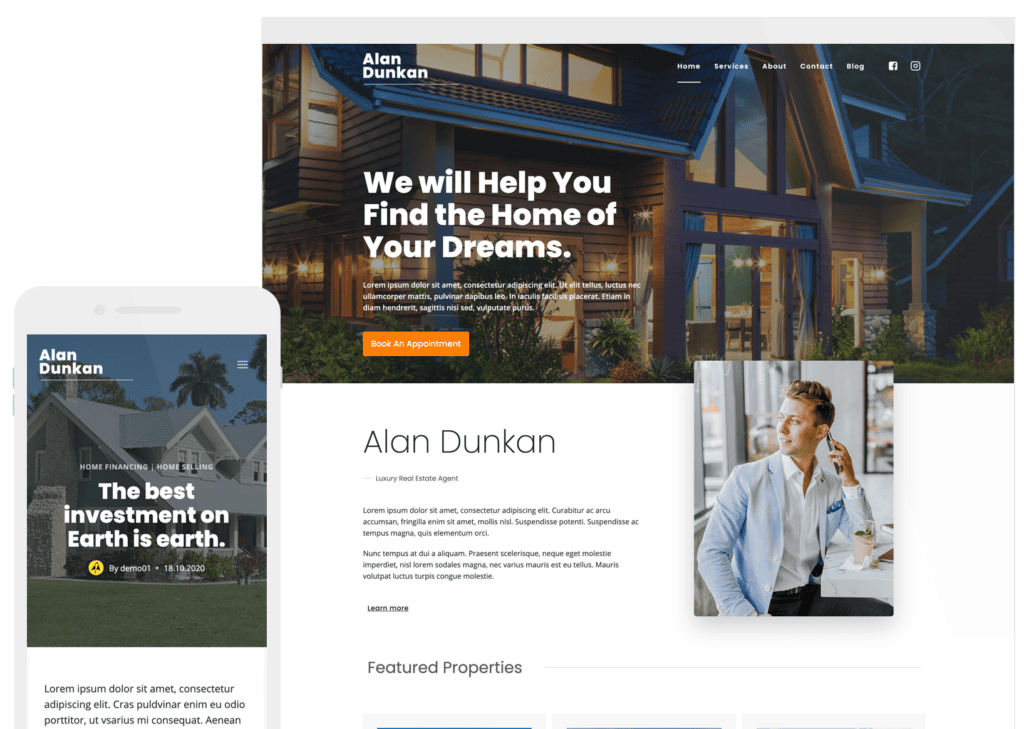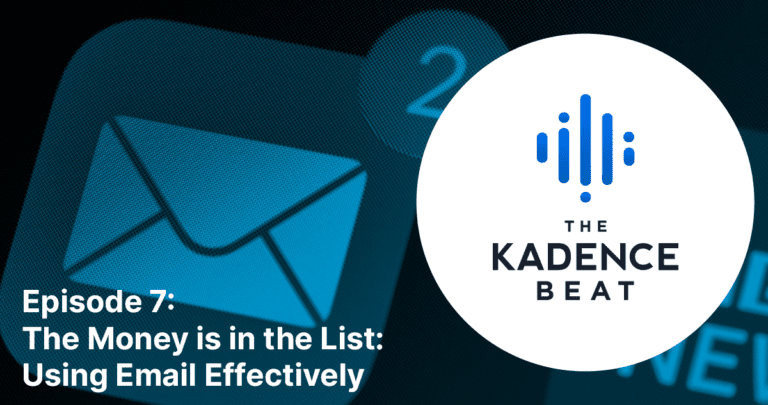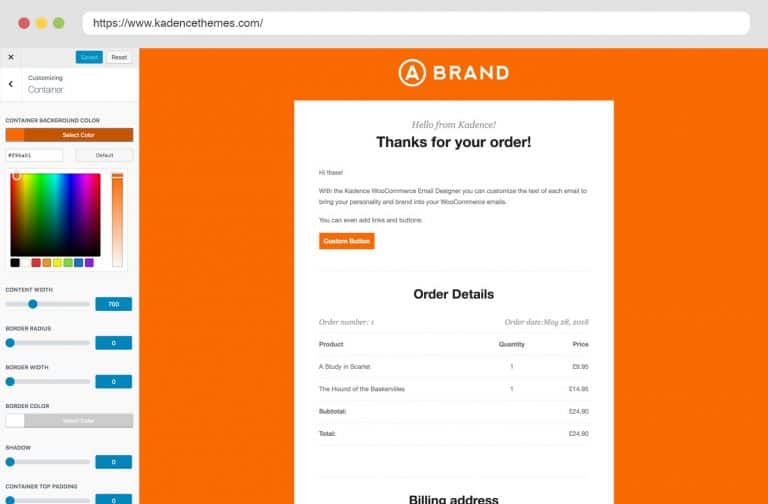Email Marketing Basics: The Ultimate Guide
Having an effective marketing strategy is essential for enticing customers to visit your website and do business with you. This strategy will be necessary whether you’re trying to lure customers back or expand your business.
Email marketing is one of the most effective ways you can directly connect with your customers and prospects. And according to 91% of marketers, it’s the most important.
Sending emails is a great way to increase valuable traffic to your website and build lasting relationships with your target audience. This guide to email marketing basics will explain everything you need to know to help you achieve this goal.
What is Email Marketing?
Email marketing is marketing by sending emails to prospective and current customers to increase brand awareness, lead generation, and make sales.
Although there’re other marketing channels, email marketing is the oldest and most cost-effective way of communicating and connecting with prospects and customers.
The ROI (Return on Investment) for email marketing is also high. For every 1 dollar spent, you’re likely to get $36 for a return on that spend.
Getting Subscribers to Your List
There is no email marketing without subscribers. These can be people who visit your website and subscribe to your email notifications, or they can be your regular customers. Site visitors who are new to your business provide the greatest opportunity for growth, but they can often be reluctant to provide an email. It’s important that you ensure that you provide value to your potential subscribers. You can do this in two ways.
- Great content. Ensuring that your website shows the best of your content that is useful to your audience. That’s why your business needs a blog. On that blog, it’s important to provide information, guidance, how-to tutorials, news, or other information that is useful to your audience. Exhibiting high quality content that is useful to those visiting your site can contribute to that desire to connect to you and your brand.
- An offer. By providing an offer in exchange for that email address, new site visitors can be encouraged to provide an email. Many sites use Kadence Conversions for effective banners, popups, and slide-ins to provide an enticing offer to a new site visitor. Making sure that this offer is related to your site’s content, that the popup or slide-in appears at the perfect time, and being unobtrusive with your offer can increase the probability that a user will provide their email.
The purpose of sending emails can be to share promotional offers or to expand your content marketing efforts. Before getting started with your email marketing, you need to know how to build a strong campaign that will yield a positive outcome.
You also need to understand the benefits of having an effective email marketing campaign.
5 Benefits of Email Marketing
Email marketing is the most popular marketing channel, with over 4 billion email users. So if you want to reach your target audience, email marketing is the best place to connect with your audience.
Remember, when someone hands over their email to your brand, they are saying that they want a deeper connection. They’re interested, possibly fans, and have a different relationship with you than someone who might come across your brand in the search engine result pages. As such, your mailings need to reflect that more intimate relationship.
Email marketing can impact your business in these top 5 ways.
Deepen and Expand Brand Awareness
When you send emails with your product updates, new offers, or educational content, your brand awareness is deepened. This is the perfect time to show intentionality with your product offering, be of deeper service, and show excitement about your products or services. Help your users become more successful with your products or services, and they become the hero. When they feel like the hero, they share your brand message with their friends. Connect with your subscribers well, and those subscribers become brand ambassadors that share your brand with their friends.
Make sure your emails are easy to share and forward. Your investment in your subscribers can be contagious.
Increase Your Website Traffic
Email marketing is a great way to get more people to visit your website. It helps increase traffic to your site, which has the benefit of more customers taking action and buying a product from your online store.
Sharing news updates and relevant information with links to your website is one way you can drive traffic to your company’s site. It’s important to fully explain how that clickable link will benefit your subscriber. Avoid adding text that feels clickbaity or non-representative of the site’s content.
Sending promotional messages with a CTA (call-to-action) button is another way to increase traffic which in turn can boost sales on your website. Email subscribers can click a button that takes them to your website’s landing pages, where they can learn more and potentially buy a product.
Upsell or Cross Sell Products
Another method to increase revenue through email marketing is upselling or cross-selling your products. Email marketing is a way of reminding customers about available offers of different products that may be related to other products or services. Email marketing is a great way to offer limited discounts or free shipping that encourages them to buy the main product and other associated products.
Sharing roundups of related content can remind customers of different products on offer, and they can make a buying decision. This marketing campaign helps to increase sales and revenue.
Boost Engagement and Marketing on Social Media
Email marketing helps you create trust-based marketing on social media. It boosts customer engagement on channels like Facebook, Instagram, or Twitter.
Including your social media pages in your emails and asking subscribers to share, click, like or comment about a product or service can help boost engagement and grow your network. It also creates brand awareness on social media which leads to more sales. Make sure these types of requests contextually make sense with the content you’re producing, and keep those kinds of shares in mind when creating content.
Provides Valuable Data
Customer behavior helps businesses know how an audience responds to different types of appeals and makes it easier to understand and reach target markets. Email marketing provides valuable data that can provide deep insights into market knowledge and behavior and reach your customers effectively.
One of the best ways of gaining such information is through email surveys. This helps you understand how to design or market your products and services.
As well, when you take your customers’ opinions into consideration, they feel valued, which increases loyalty and contributes to business growth.
Getting Started with Email Marketing
The first step to getting started with your email marketing campaign is to have a working strategy. An effective email marketing strategy allows you to send emails that people want to read and take action on.
Following these key steps can attract more customers and achieve your marketing goals.
Define Your Target Audience
Understand your customers’ needs and tailor your email marketing campaign to meet them. Knowing what your customers want will help you send relevant emails that address their pain points.
Customers also look forward to opening and reading your emails if they address their needs and help them solve problems.
Establish Your Marketing Goals
Know what you want to achieve with your marketing campaign. Look at the email marketing statistics in your industry and use them as a guide to develop your goals.
Developing realistic goals enables you to measure success and make informed decisions.
Build an Email Marketing List
Building an email list is collecting emails from people who have agreed to receive your emails. These are the people you will send valuable and informative content depending on their needs.
There are different ways to build an email list. If you have a site using Kadence Blocks, you can add simple subscription forms to encourage site visitors to subscribe to your list. You can also use Kadence Conversions to add popups or slide-ins to encourage new subscribers. Growing a subscriber base can take some time, but if you offer great content and great offers for email opt-ins, your can grow your list much faster.
Segmenting the List
If you have a larger business offering, you might want to create groups of subscribers. These are often called segments or audiences in email service providers (ESPs). If you have a segmented list, you might want to send different messages to different segments. And in many ESPs, a subscriber might fit into more than one segment. These segments should be considered in your email marketing strategy.
Decide on a Marketing Email Strategy
How will you be using email marketing? Each business can have a different reason for mailing an audience. For some, it is to share product news, new features, new services, or limited time discounts. For others, you can offer an opportunity to learn about how to use a product or service in a new way. Make sure you’re clear in your intention with your marketing strategy and why you are mailing your audience, and this will help inform every email that you send to your list.
Create a Schedule
A schedule will help keep your email marketing campaign on track. It creates a level of consistency that makes customers see you as reliable. Some businesses might choose weekly schedules, others might only need to mail monthly. And you might decide to have different schedules for different types of subscribers.
Having a regular schedule meets subscriber expectations. Subscribers will be looking forward to reading your emails which means there will be fewer unsubscribes. Having a reminder also ensures you remember to send your emails on time.
Types of Email Marketing Campaigns and Examples
Knowing the type of email marketing campaign helps you reach your audience and address their needs. To make the best choice consider your audience and the type of email marketing that suits their needs.
For example, if you have an online community, a newsletter will keep them updated and engaged. Let’s take a deeper look at each type of email marketing campaign.
Welcome Emails
A welcome email is the first message you send to your subscriber. The first email introduces your new subscribers to your business. These emails should provide an overview of your product and service, and most likely will link into various parts of your site where you further explain your offering.
Tell subscribers something valuable and interesting about your products and services that meets your audience where they are. What problems do your products or services solve? How do you help your audience live a better life? How do you make doing something more effective, more fun, more rewarding? Encourage them to take the next action with your welcome email but make emails concise and friendly.
Newsletters
Newsletters create a sense of community and keep your audience updated with information like industry news, blog roundups, and tips.
To keep your audience engaged, send newsletters regularly. For example, you can send them weekly or bi-weekly.
Promotional Emails
Promote your products and services with promotional emails. Let your subscribers know what’s on offer, discounts, and freebies that will lead to more sales.
Seasonal Marketing Emails
These are emails you send during a specific time of the year. Some products and services are relevant for specific times of the year. Marketing them at that time increases sales.
Re-engagement Email Marketing Campaigns
Re-engagement emails try to reach out to subscribers who are not actively engaging with your brand. If a subscriber isn’t opening emails, a re-engagement email will try to encourage customers to click, open or make a purchase. If they don’t re-engage, you might want to consider unsubscribing those people.
How to Build Your Email List
An effective email marketing campaign will adopt, innovate, and grow your business. Building an email list with Kadence Conversions increases your revenue. With Kadence Conversions, you can grow your email list with attention-grabbing exclusive bonuses timed to display when your prospects are ready to convert.
A high-quality email list also produces the best results. Here’re steps that will help you get started with your campaign.
Choose a Reliable Email Marketing Service Provider
Working with an email service provider (ESP) enables you to send emails to a large number of email subscribers. An email marketing company helps you deliver messages effectively using automation and email templates.
You’ll also have access to helpful tools that will allow you to manage a large email list and track analytics. For example, you will see customers who are opening your emails and engaging with your messages.
Such analytics helps you to measure the performance of your campaign and make data-driven adjustments.
Create an Email Marketing List
If you’re already doing business, you probably have some customers’ emails. Think about the physical forms your customers may have filled out and collect their emails.
If you’re starting from scratch, no problem. You can start with a Kadence form block that allows you to easily create a contact or marketing form and style it in the blog editor.
After you create your online form, encourage your blog audience and social media followers to sign up. Collect quality contacts using lead magnets like newsletters, free downloads, or an online course.
Upload Your Contact List to Email Marketing Account
After collecting your customer emails, add and organize them in your email marketing account. For example, you can group your contact list depending on demographics or customer behavior. Creating customer personas will help you send personalized and relevant emails to your customers.
Start With a Welcome Email
The first email you’ll send your new subscribers is a welcome message. A welcome email creates a good first impression of your business.
Such emails help you create a connection with your audience early because they are eager to hear what you have to say.
A warm greeting and an overview of what your subscribers should expect help set the right brand voice from the start. Add some valuable information to keep customers and prospects looking forward to more. Here’s a checklist to help you send an effective welcome email.
- Use a friendly tone
- Reinforce what you offer
- Offer a good deal with a clear CTA
- Create an Email template
- Send the welcome email promptly to all subscribers.
A professional email template catches the attention of your subscriber. People’s attention span is very small, and they scroll through their emails fast.
That’s why choosing a clean and attractive template relays your information fast. Make sure your template looks good on a PC and mobile.
Customize your template and add a business logo and images that link to your website. When designing your email template, include your business colors, name, contacts, and links to your social media channels.
A well-branded email message helps customers quickly identify your business and make a purchasing decision. Save the template and make a copy, so you don’t need to repeat the designing phase each time you want to send an email.
Perfect Your Writing
Practice writing conversational and persuasive messages that’ll help you connect with your subscribers quickly. The more you practice and do persona mapping, the easier it becomes to connect to customers.
Ensure your emails have a heading, a body, and a call to action. Spend more time crafting your email’s subject line. The subject line should create a good impression and encourage more people to open your emails.
If your subject line isn’t attractive enough, subscribers will likely skip your emails. Use about 40 characters on your subject line so that it’s short and interesting.
For example, you can ask a compelling question or add a deadline to attract attention and increase the email’s open rate.
Check Your Email
If you’re starting out, you might slip up a few times. Check your writing and correct any spelling mistakes. Also, ensure you have included a call to action (CTA) and test all the important links. Do a thorough check because you cannot unsend your emails once you click the send button.
Choose the Best Time to Send Emails
When sending emails, consider the time factor. Depending on your email list and customer data determine whether you will send specific emails during the day or night.
Analyze your data, group your email list, and create a consistent schedule for sending your emails. Some customers’ hobbies or activities will determine the best time to send your emails.
Track Your Email Marketing Results
Keep track of your email marketing campaign and see what needs improvement. Analyze the open, unsubscribes, and click-through rates.
Also, track the open rate over time and determine if there’s an improvement or a decline. Email reports will give you valuable information that you can use to make changes to your email marketing efforts.
Tips for Creating a Successful Email Marketing Campaign
Before you start email marketing, it’s helpful to have some tips to make your email marketing campaign great. Here are some best practices to consider.
Curate a High-Quality Email List
A high-quality email list will give you maximum impact. That means you’ll send your emails to the right people, and they’ll engage with your brand. If a subscriber is not engaging, try a re-engagement campaign to see if they’re still interested and engaged with your brand.
Design Your Email Template
Make your emails look good, and let them represent your brand. Include your branding, images, and white space, and make them responsive.
Personalize Your Emails
An email lands in your subscriber’s inbox, which is a more personal conversation. Write emails with a human touch. Personalize emails using your subscribers’ data and grab attention. For example, use a subscriber’s name in your emails. You can also recommend products based on their past purchasing activities.
Be Conversational and Do Follow-ups
Build a relationship with your subscribers using friendly and conversational writing. When your emails feel relatable, subscribers will want to engage with you more.
Sometimes you may also need to do follow-ups the first, second, and third time. For example, if there’s an abandoned cart, you can retarget the customer.
Ask for replies. So many email marketing efforts are one-way. Be unique as you get started and ask for your subscribers to reply with feedback. Make sure you reply back to them with at least a thank you. In this way, those intimate email relationships can flourish reflecting positively on your brand.
Test Your Emails
Test your emails and find out which ones perform better and why. That way, you’ll be able to improve your email marketing campaign.
For example, an A/B test can tell you which email is working. It also tells you more about how your subscribers respond to your email marketing efforts.
Follow Email Regulations
Following email regulations ensures your emails are not marked as spam by email providers like Gmail. Stay compliant and observe email and data guidelines.
For example, avoid adding people to your email list who have not explicitly accepted your request. Also, ensure you have unsubscribe buttons on your email and provide privacy information upfront. Regulations also require that you provide an actual physical address to your emails to identify your business.
Email Marketing Analysis
A thorough email marketing analysis helps you make better business decisions. Breaking down your analysis allows you to better understand the effectiveness of your email marketing efforts.
A/B Testing
Testing specific variables in your emails lets you know what’s working for your audience. For example, you can test the effectiveness of the color or position of a CTA button. Two emails with different CTA button designs can produce different results that’ll help you better know your audience.
KPIs of Email Marketing
Identify the Key Performance Indicators (KPIs) you need to pay attention to when analyzing an email marketing campaign. For example, you can look at the open rate, unsubscribes, and click-through rate.
Reporting template
An email marketing reporting template helps you organize your data in a way that makes sense. For example, a reporting template enables you to identify the number of emails you send and deliver along with the metrics that tell you whether or not your campaigns are effectively connecting with your audience.
Grow your Site with Kadence
A Kadence full bundle gives you everything you need to supercharge your site to take advantage of the latest web design trends and grow an email list. From Kadence Blocks containing the form block to collect emails to Kadence Conversions, the Kadence Full Bundle gives you everything you need to make an effective site that represents your brand.
Create Your Website With KadenceWP Today!

Written by Kathy Zant
Kathy is a writer and speaker who helps businesses and people thrive. She creates some of the best content and tutorials about how to get more out of technology, marketing how-tos that help you grow your business, reports on security issues you need to know as they occur, and gives you all the tutorials to stay ahead and secure your life and business.
By Kathy Zant
Kathy is a writer and speaker who helps businesses and people thrive. She creates some of the best content and tutorials about how to get more out of technology, marketing how-tos that help you grow your business, reports on security issues you need to know as they occur, and gives you all the tutorials to stay ahead and secure your life and business.
Updated July 29, 2024



